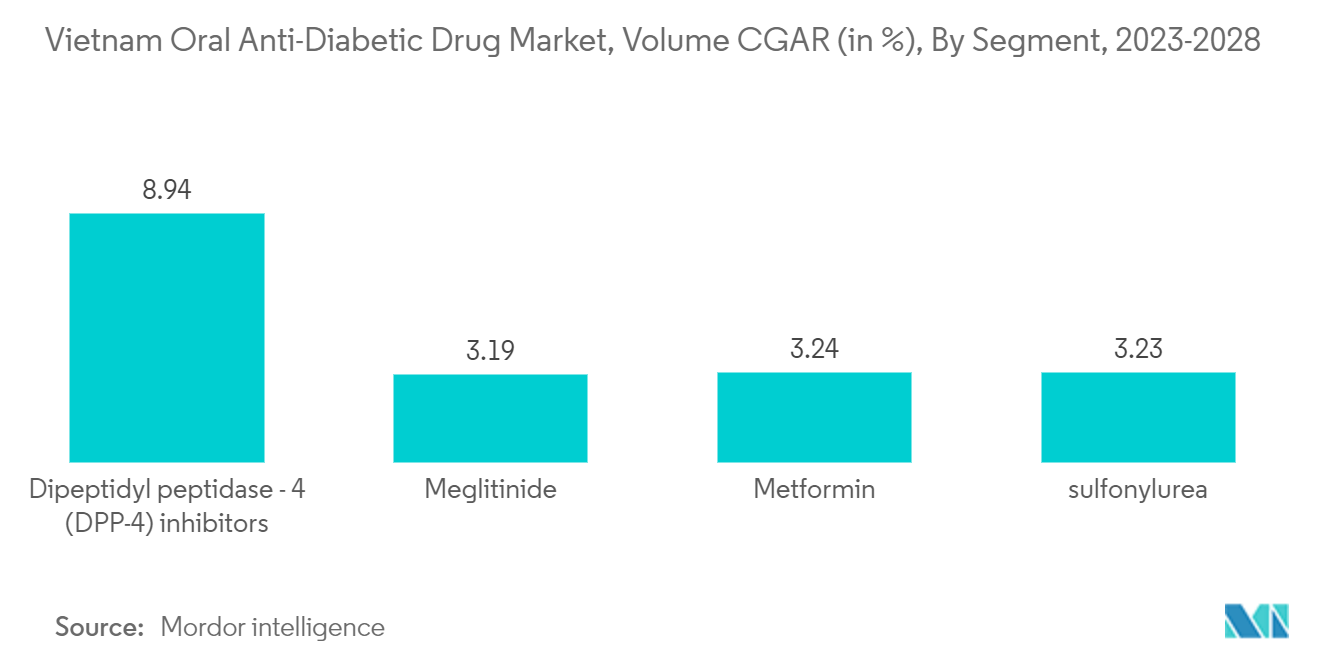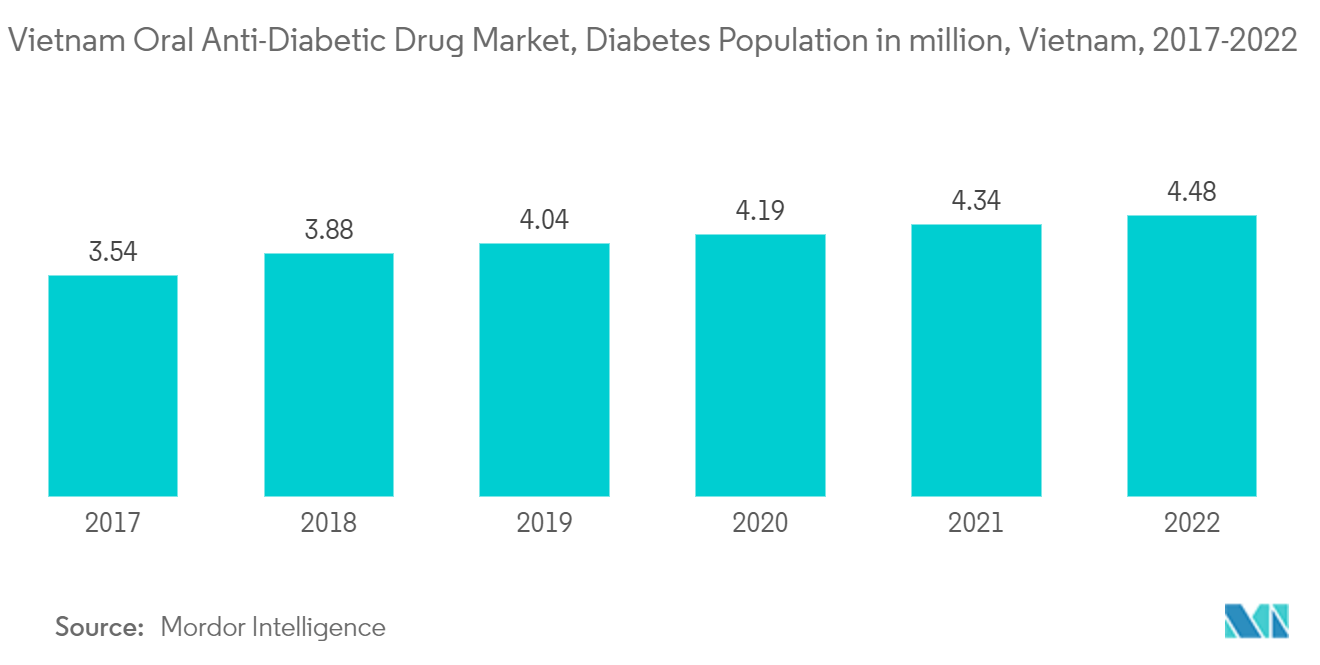Market Trends of Vietnam Oral Anti-Diabetic Drug Industry
Sulfonylureas Segment Occupied the Highest Market Share in the Vietnam Oral Anti-Diabetic Drugs Market in the current year.
Regarding revenue, the Sulfonylureas segment is anticipated to lead the Indonesia Oral Anti-Diabetic Drugs Market and post a CAGR of over 1% during the forecast year. Among the several Oral anti-diabetes drugs available, sulfonylureas (SUs) constitute one of the vital pharmacotherapeutic agents in managing T2DM.
When Janbon et al. noticed that certain sulfonamides caused hypoglycemia in experimental animals, they discovered sulfonylureas. Carbutamide (1-butyl-3-sulfonylurea) was created as a result of this finding. The first sulfonylurea used to treat diabetes was carbamide, which was later taken off the market due to its harmful effects on bone marrow.
Various sulfonylureas were available by the 1960s, often divided into two categories (or generations). Second-generation sulfonylureas like gliclazide, glipizide, glibenclamide, and glimepiride are presently in use, although first-generation medications like tolbutamide and chlorpropamide are no longer. Despite variations in absorption, metabolism, and dosage, second-generation drugs are similarly efficient at lowering blood glucose levels. When diet and exercise alone are insufficient to maintain a healthy blood sugar level, persons with type 2 diabetes frequently turn to drugs as their first line of treatment.
To treat type 2 diabetes mellitus, a wide range of anti-diabetic medications are now accessible. These include sulfonylureas, glinides, thiazolidinediones, biguanides, and -glucosidase inhibitors. Drugs linked to incretins have recently been created, including glucagon-like peptide-1 (GLP-1) receptor agonists and dipeptidyl peptidase-4 (DPP-4) inhibitors. Despite the abundance of anti-diabetic medications on the market, sulfonylureas are the most popular medication for treating people with type 2 diabetes.

The increasing Diabetes Population in Vietnam is driving the market.
Obesity, nutritional changes, and other cultural shifts are all linked to diabetes, a developing issue in Vietnam. More study is required to understand this healthcare issue further and provide focused solutions.
As people age, issues are more common. The aging population that Vietnam will soon experience and the prolonged lifespans of diabetics brought on by more effective treatment choices are anticipated to result in higher costs.
According to research on the financial toll of diabetes in the US, expenses have increased despite efforts to cut back on avoidable hospitalization. This shows that to change the trend or even slow the rise in the cost of diabetes, present treatments in Vietnam must be increased. However, given that Vietnam is also dealing with other non-communicable illnesses that continue to compete for resources in the already constrained public healthcare budget, it is impossible to increase budget allocation and resources to address the issue considerably. The government should instead work to deploy its resources better. The whole budget might be affected only somewhat by a few economic decisions.
To keep diabetes under control, regular monitoring services and more potent glucose-lowering medications should be implemented at the primary care level. In Vietnam, insulin treatment is only started if the HbA1c level is below 9% and is only available at district-level or higher health institutions. The healthcare system and society are financially burdened by diabetes and its consequences, with a sizable portion of spending on addressing complications. To better manage diabetes and minimize difficulties, which might lessen the financial and health burden on the healthcare system and society, actions aimed at improving patient glycemic control should be taken.
Vietnam still maintains a low prevalence of obesity, despite a significant rise over the previous ten years, especially the last five years. These gains coincided with continuous malnutrition increases, confirming the coexisting problems of over- and undernutrition in Vietnam and other developing countries. Additionally, the majority of those with T2D have a BMI of 23 kg/m2. Still, their adiposity has grown, as seen by an increase in WHR and linked to chronic overconsumption of foods with a high glycemic index.


